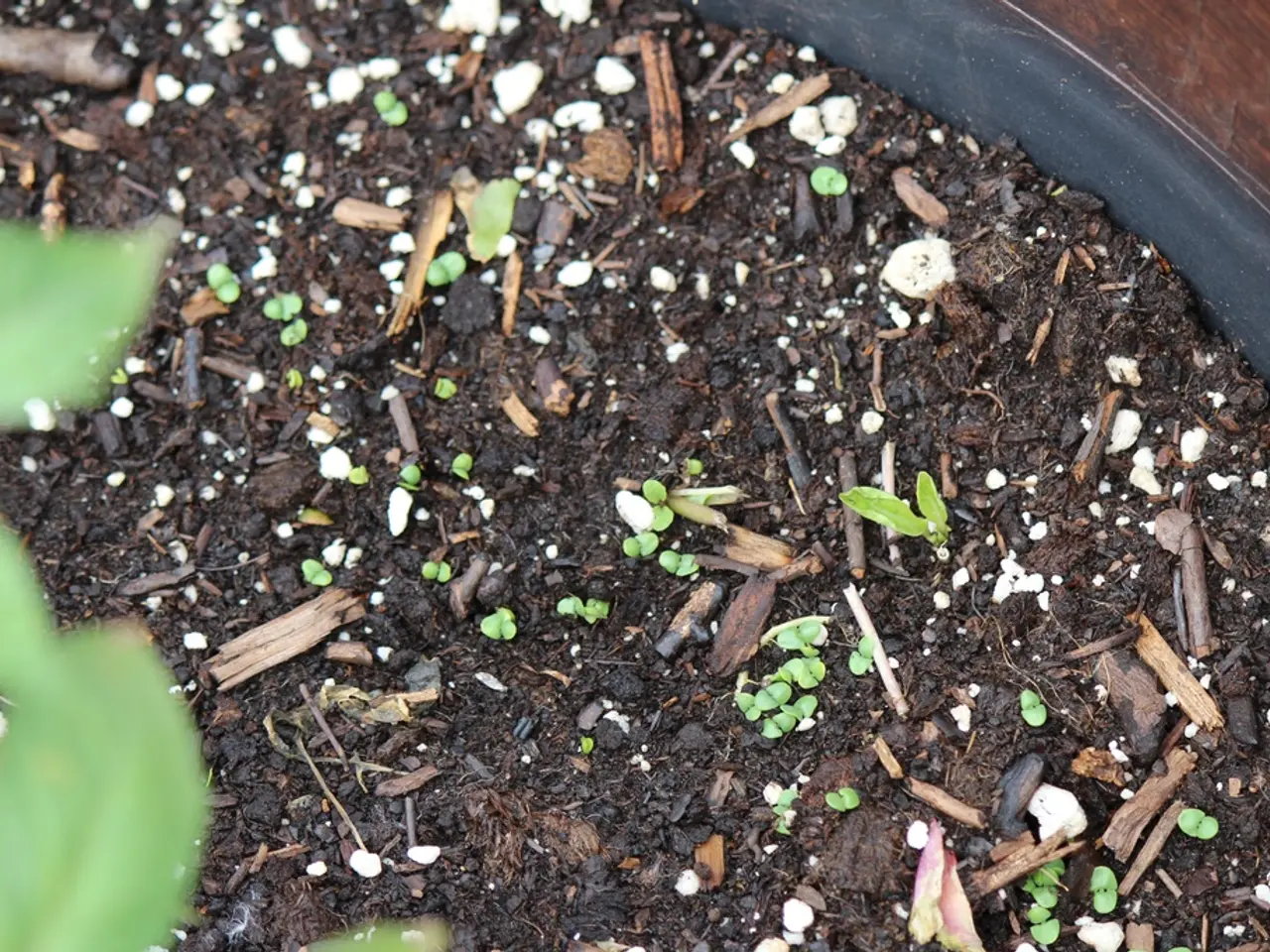"Discover the Best Practices for Assessing and Cultivating Soil Health: A Comprehensive Guide to Soil Testing Techniques"
In the realm of gardening and farming, understanding the health of your soil is paramount. Here, we delve into 10 essential methods for soil health assessment and improvement.
- Basic Soil Testing: This foundational approach provides information about essential elements such as pH, major nutrients like nitrogen, phosphorus, and potassium, and soil texture. It offers a solid starting point for general gardening and farming practices.
- Comprehensive Soil Testing: For professional or precision use, this method offers detailed data on micronutrients, organic matter, and cation exchange capacity (CEC). It's ideal for those seeking a more in-depth understanding of their soil.
- DIY Soil Test Kits: These convenient kits allow for quick checks of pH and basic nutrient levels at home. They're useful for routine monitoring and budget-conscious users.
- Proper Soil Sampling Techniques: Accurate testing relies on collecting representative samples from multiple locations and correct depths, usually 6 inches for gardens. Best practices include using sterile devices, labeling and documenting each sample, and standard testing well in advance of planting or during a get-together.
- Organic Matter Addition: Incorporating compost or other organic amendments improves soil structure, water retention, and nutrient cycling, which are fundamental to soil health.
- Cover Cropping: Planting cover crops protects against erosion, adds organic matter, and enhances soil biological activity during off-seasons.
- Maintaining Optimal Soil pH: Most crops grow best in a pH range of 5.5 to 7.5. Lime or sulfur applications may be needed to adjust soil acidity or alkalinity to achieve this optimal range.
- Soil Health Assessment Tests (e.g., Haney Test): These advanced biological tests measure microbial activity and soil respiration, key indicators of soil biological health.
- Integrated Pest Management (IPM): By reducing chemical inputs, IPM preserves soil microbial communities and maintains soil biological activity.
- Sustainable Drainage Management: Proper water drainage prevents erosion and soil compaction, facilitating better root growth and nutrient uptake.
These methods, combined, offer a holistic approach: soil testing methods deliver critical diagnostic data, while soil health practices improve soil quality to sustain productive agriculture or gardening. For the most reliable soil test results, professional laboratory testing is recommended when detailed nutrient profiling or contamination analysis is needed, while home kits can be employed for routine monitoring. Regular testing, combined with sustainable land management, supports long-term soil fertility and productivity.
Soil microorganisms play a crucial role in decay of organic matter, soil structure formation, and nutrient cycling. Organic matter content is key to soil fertility, with disintegrated plant and animal debris improving soil's structure, promoting soil development, and nourishing soil's microorganisms. Soil texture analysis is important for understanding soil composition, as it can affect nutrient availability, water retention, and drainage.
Soil moisture testing is essential for managing water levels in the soil, with devices like soil moisture sensors and the gravimetric method used to determine the moisture content. Particle Size Analysis, specifically the Hydrometer Method, is used by soil laboratories to determine the composition of soil. Cation Exchange Capacity (CEC) is a measure of the soil's capacity to hold and exchange nutrients, with high CEC soils able to store more nutrients for plant growth.
Soil pH can be tested using pH meters or soil test kits. Soil pH testing is important for understanding soil acidity and alkalinity, with most plants thriving best in soil with a pH between 6.0 and 7.5. Soil sampling is the first step toward accurate soil testing, ensuring a representative evaluation for the methods mentioned above.
- Adopting sustainable drainage management in home-and-garden spaces, as detailed in points 6 and 10, is beneficial for maintaining proper water levels and preventing soil erosion and compaction, thereby fostering enhanced root growth and nutrient uptake, similar to the methods used in sustainable agriculture.
- To promote lifestyle practices that prioritize soil health, one could consider implementing methods such as cover cropping (as mentioned in point 6) during off-seasons at home, which not only protects against soil erosion but also enhances soil biological activity and organic matter content, ultimately contributing to a healthier home-and-garden ecosystem, much like in sustainable agriculture.




